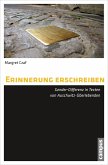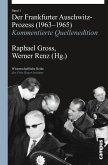Making sense of the past is largely mediated through images, because images - and the norms that accompany them - are at the heart of mnemonic practices. The pictures of Nazi camps have taken on a life of their own. Throughout the decades, they have been massively displayed, reproduced, distributed and regularly taken out of their historical context. Given that they seemingly represent universal suffering, they can be regarded as "secular icons" (Cornelia Brink). This study asks how media memory of National Socialism comes to bear in private and semi-official contexts today.In order to describe both the contemporary use and cultural meanings of visual representations of Nazi atrocities, this study examines amateur photography as a visitors' practice at the Auschwitz memorial site. Today, a majority of visitors take digital photos to document their stay, eager to capture iconic "trophies" on site. These seemingly lookalike shots express dominant and collective modes of experience which are negotiated within an ethical and social framework.Based on participant-orientated research (participant observation,group discussion,interviews and image analysis), this study identifies six dominant photographic genres through which visitors focus their historical understanding of the site and negotiate drawing historical and symbolical "lessons" from the past. It argues that media memory and new forms of digital distribution re-frame visitors' gaze onto the materiality of history, generating specific visually supported cultural and political - often globally framed - narratives about the Holocaust. It also discusses the role of iconographic communication in general by taking into account a blind person's visit to Auschwitz.
Dieser Download kann aus rechtlichen Gründen nur mit Rechnungsadresse in A, B, BG, CY, CZ, D, DK, EW, E, FIN, F, GR, HR, H, IRL, I, LT, L, LR, M, NL, PL, P, R, S, SLO, SK ausgeliefert werden.









